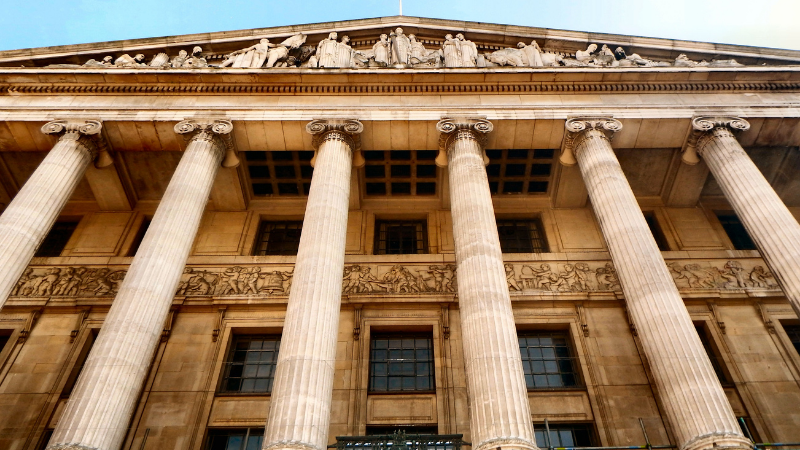
The Paycheck Protection Program (PPP) was one of the most prominent relief measures offered during the COVID-19 pandemic. Created under the Coronavirus Aid, Relief, and Economic Security (CARES) Act in March 2020, the PPP offered forgivable loans to small businesses to help them maintain payroll and cover certain operational expenses during a period of historic disruption.
As the pandemic subsided and the program closed after multiple funding rounds, millions of businesses transitioned to the next phase—navigating the tax implications of PPP loan forgiveness. While the original intent of the program was clear—provide emergency relief without a tax burden—the actual implementation included several twists and clarifications. Now, with most forgiveness applications completed and tax filings catching up, it’s essential to understand the final tax treatment of PPP loans and how to handle IRS scrutiny, reporting responsibilities, and forgiveness outcomes.
A Quick Refresher: What Is PPP Loan Forgiveness?
The PPP allowed businesses to apply for loans to cover payroll, rent, mortgage interest, utilities, and certain other approved expenses. The key incentive was the promise of loan forgiveness if the borrower used the funds as intended and met requirements such as:
- Spending at least 60% of the funds on payroll
- Maintaining employee headcount and compensation
- Submitting a forgiveness application through the lender
According to the Pandemic Oversight Committee, as of early 2025, over 92% of all PPP loans have been forgiven. That includes more than 10 million loans totaling hundreds of billions of dollars.
The takeaway? If your loan was properly forgiven, that’s a significant financial relief. But that forgiveness still needs to be correctly addressed in your tax filings. The IRS mandates specific rules for which businesses can or must use each method. The decision isn’t just about preference—it’s about eligibility, reporting accuracy, and potential tax outcomes.
Tax Treatment: Exclusion from Income and Expense Deductibility
Initially, PPP loan forgiveness raised questions. Under standard tax rules, if a business has debt forgiven, that forgiven amount is considered taxable income. However, the CARES Act specified that PPP loan forgiveness would not be treated as taxable income.
This created confusion because the IRS’s traditional approach would disallow the deduction of expenses paid with tax-exempt income. Essentially, businesses feared a “backdoor tax”: the forgiveness wouldn’t be taxed, but the payroll and rent expenses used to qualify for forgiveness wouldn’t be deductible either.
Fortunately, this issue was resolved by the Tax Relief Act of 2020, which clarified that businesses can fully deduct the expenses paid using PPP funds, even if those loans were forgiven. This aligns with the original intent of the law and provides what tax professionals call a “double benefit”:
- Forgiveness is excluded from gross income
- Related expenses remain fully deductible
For most taxpayers, this was a massive win—particularly those who had used PPP loans to cover high payroll and overhead costs.
What Happens If Forgiveness Was Improper or Denied?
Not every PPP loan was forgiven. In some cases, borrowers failed to meet the forgiveness criteria or misused the funds. Others may have misunderstood eligibility or documentation requirements if forgiveness was denied—or if it was granted improperly—the tax treatment changes significantly.
According to the IRS’s 2022 advisory, any loan forgiveness that was incorrectly approved is taxable income. The IRS has stated that it will audit returns where borrowers claimed improper forgiveness and may impose penalties or additional tax liability.
This includes loans:
- Used for unqualified expenses
- Obtained fraudulently
- Forgiven in error without meeting the SBA criteria
What this means: If the forgiveness was not valid, the forgiven amount must be reported as income, and the business must pay tax on it.
Pro Tip: If your forgiveness was denied or partially approved, consult a tax professional immediately. You may still deduct qualified expenses, and you’ll need to prepare for repayment.and accurately reflect business activity. Hybrid methods (using cash for some items and accrual for others) may be used in certain circumstances, but must also meet this standard.
Applying for Forgiveness: SBA’s Current Process
The SBA no longer issues new PPP loans, but borrowers can still apply for forgiveness using one of several forms, depending on their loan size and circumstances:
- Form 3508EZ for borrowers who didn’t reduce wages or employee count
- Form 3508S for loans under $150,000
- Form 3508 (standard) for more complex cases
The SBA allows borrowers to apply at any time up to the loan’s maturity date, though interest continues to accrue during the waiting period. If borrowers don’t apply within 10 months of the end of their covered period, repayment begins.
Borrowers can apply through their lender or the SBA Direct Forgiveness Portal, if eligible.
More info: SBA.gov PPP Loan Forgiveness
Reminder: Once the SBA forgives a loan, the agency marks it as closed and will not revisit forgiveness unless fraud or error is discovered.
Final Thoughts: What Businesses Should Do Now
If your PPP loan has been forgiven, it’s critical to ensure that your financial statements and tax filings reflect the proper treatment:
- Exclude forgiven amounts from taxable income
- Deduct related payroll and overhead expenses
- Retain all documentation for SBA and IRS audit readiness
If your forgiveness was denied—or your forgiveness may be subject to future IRS scrutiny—make sure you understand your obligations. Pay attention to IRS guidance, and don’t assume the matter is settled just because the SBA closed your case.
At Sorren, we’ve helped hundreds of clients navigate PPP funding, forgiveness, and the related tax implications. Whether you’re trying to document forgiveness correctly or respond to an IRS inquiry, we’re here to help.
Need help with post-PPP tax strategy? Contact us today to talk with one of our experienced advisors.
PPP Loan Forgiveness Timeline: What You Need to Know
Here’s a quick overview of the general forgiveness lifecycle:
| Event | Timeline |
| PPP loan disbursed | 2020 – early 2021 |
| Covered period | 8 to 24 weeks after loan disbursement |
| Deadline to apply for forgiveness | 10 months after the covered period ends |
| SBA/Lender review period | Up to 90 days (lender), then SBA may take 90+ days |
| Repayment begins (if no forgiveness) | After 10 months |
If forgiveness was granted, no repayment is required. If denied or partially forgiven, repayment of the balance (with a 1% interest rate) begins according to the original terms, typically over 2 or 5 years.
Common Misconceptions About PPP Forgiveness
Even years after the last PPP loan was issued, misconceptions persist…
“Forgiven loans never affect taxes.”
Not always true. Improperly forgiven loans can be taxable. Additionally, IRS scrutiny of forgiveness claims may result in adjustments in the future.
“The IRS and SBA won’t look back at PPP loans.”
False. The SBA and IRS both maintain the right to review and audit PPP loans and forgiveness claims, particularly those flagged for fraud or high-dollar discrepancies.
“If my lender approved it, I’m in the clear.”
Not necessarily. The lender initiates forgiveness, but the SBA must approve it. And if later issues arise, the borrower, not the lender, is ultimately responsible.
Summary: What to Remember About PPP Loan Forgiveness and Taxes
- PPP loan forgiveness is generally not taxable, and related expenses are deductible.
- If forgiveness was granted improperly, the IRS may treat the amount as taxable income.
- The SBA forgiveness process can take months—borrowers should be proactive with applications and documentation.
- Improper use of funds or failure to apply can result in loan repayment obligations.
- Maintain all PPP-related records and consult a tax advisor before filing returns impacted by forgiveness.
At Sorren, we believe that tax compliance and strategy go hand in hand. PPP forgiveness may be behind us, but its implications will shape tax planning and audits for years to come.
Need help reviewing how your PPP loan forgiveness affects your taxes? Reach out—we’re here to guide you.
PPP Forgiveness FAQ
Q: Do I have to report PPP loan forgiveness on my tax return?
A: No, if the loan was properly forgiven, you exclude it from gross income. However, your tax advisor may recommend including a statement or worksheet for documentation.
Q: What happens if I missed the forgiveness deadline?
A: Your loan converts to a standard low-interest loan. You must begin repayment, but you may still qualify for partial forgiveness—apply immediately.
Q: Can the IRS audit my PPP forgiveness?
A: Yes. Especially if the forgiveness appears improper or if inconsistencies are found in your tax return. Keep all related records for at least 6 years.
© 2025




